Abstrait
La stabilité de la température est cruciale pour les performances des ultraviolets entièrement solides (UV) Qu'est-ce qu'on fait, influençant leurs caractéristiques de sortie et leur efficacité. Cet article présente un système innovant de contrôle de la température utilisant un système de réfrigération à onduleur CC de type compression de vapeur couplé à une compensation électrothermique.. Le système exploite le système proportionnel-intégral-dérivé (Piquer) commande pour régler la vitesse et la puissance électrique d'un compresseur micro-onduleur DC, permettant une régulation précise et efficace de la température. Les résultats expérimentaux démontrent que le système atteint une stabilisation rapide (6 minutes) et une grande précision (±0,01°C), ce qui en fait une solution rentable et compacte pour les applications croissantes des lasers UV dans le marquage, coupe de précision, et d'autres industries.
1. L'évolution des lasers UV entièrement solides
Lasers UV, avec des longueurs d'onde ≤400 nm, sont indispensables dans des secteurs comme la surveillance environnementale, médecine, et microfabrication en raison de leur courte longueur d’onde, haute résolution, et une énergie concentrée. Le développement de lasers UV tout solide, qui utilisent des diodes laser (LD) comme pompes, a révolutionné ce domaine en surmontant les limites des lasers à gaz et excimer, comme la grande taille, faible efficacité, et coût élevé. Les innovations des années 1990 et les progrès ultérieurs ont renforcé l'importance des lasers UV entièrement solides pour diverses applications., y compris le traitement des matériaux de précision et les traitements médicaux.
2. Défis liés au contrôle de la température des lasers UV entièrement solides
Les performances des lasers UV entièrement solides sont très sensibles aux variations de température, affectant la stabilité du LD et l'efficacité des cristaux optiques non linéaires. La chaleur générée lors du pompage LD et de la conversion de fréquence doit être efficacement dissipée pour éviter les changements d'indice de réfraction et la dérive de longueur d'onde., qui dégradent la sortie laser. Méthodes de refroidissement traditionnelles comme les systèmes basés sur des ventilateurs ou le refroidissement thermoélectrique (TEC) sont confrontés à des limites d’efficacité, stabilité, et évolutivité. Une solution plus efficace réside dans les systèmes avancés refroidis par eau utilisant des compresseurs miniatures à courant continu..
3. Principes du système de contrôle de la température

Présentation du système:
Le système proposé intègre une boucle de refroidissement par eau et un cycle de réfrigération à compression de vapeur. Les composants clés comprennent:
- Échangeur de chaleur: Facilite le transfert de chaleur entre l’eau et le réfrigérant.
- Compresseur: Un compresseur miniature à onduleur DC (Voici quelques détails sur les modèles de mini compresseurs de Coolingstyle) ajuste dynamiquement la capacité de refroidissement.
- Chauffage électrique: Permet un réglage précis et compense le dépassement du refroidissement.
- Capteur de température: Un capteur Pt100 assure une surveillance de température de haute précision.
Opération:
L'eau absorbe la chaleur du laser et circule à travers l'échangeur de chaleur, où le réfrigérant le refroidit. Le contrôle PID ajuste la vitesse du compresseur et la puissance du chauffage pour stabiliser la température de l'eau., assurer un fonctionnement constant du laser.
4. Matériel et fonctionnalités du système
4.1 Système de réfrigération
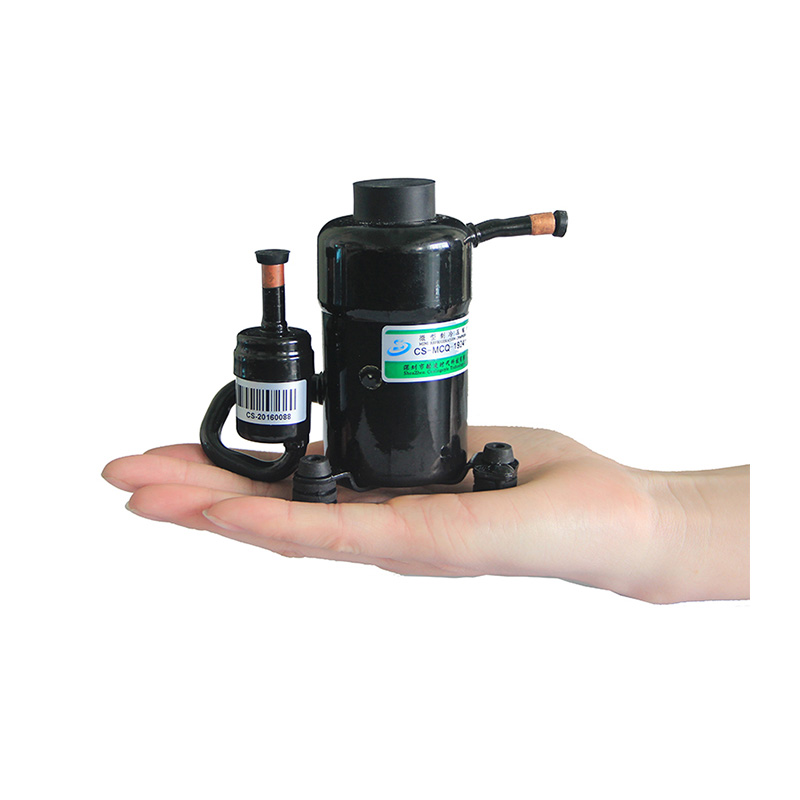
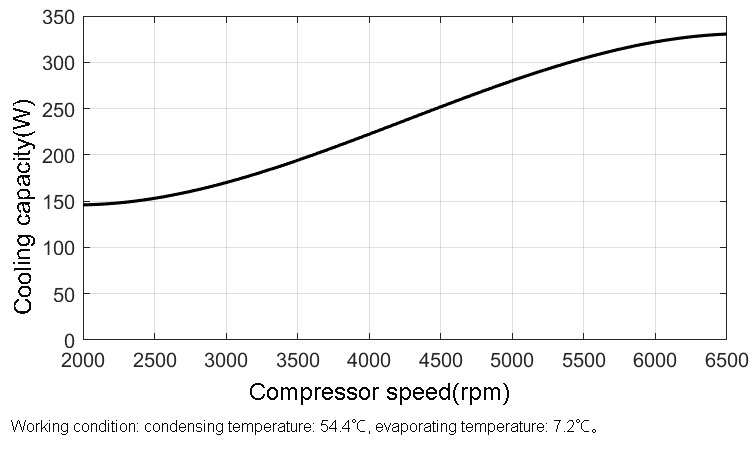
Le compresseur compact DC-Inverter (56 mm diamètre, 850 g poids) atteint des vitesses variables pour moduler la capacité de refroidissement. Sa courbe de performance (Chiffre 3) souligne sa capacité d'adaptation, ce qui le rend idéal pour un contrôle précis de la température.
4.2 Unité de chauffage
Un radiateur électrique compense les fluctuations de température et empêche le refroidissement excessif dans des conditions de faible charge. Utilisation du contrôle PWM, le chauffage permet des réglages précis de la puissance.
4.3 Détection de température
Un capteur Pt100 avec une configuration à trois fils garantit des lectures précises de température en éliminant les effets de résistance des fils. Les données du capteur, traité via un convertisseur A/D, informe l'algorithme de contrôle PID.
4.4 Contrôle du PID
L'algorithme PID ajuste dynamiquement la vitesse du compresseur et la puissance du chauffage en fonction des erreurs de température en temps réel.. Ce processus itératif minimise le temps de stabilisation et maintient une précision de ±0,01°C.
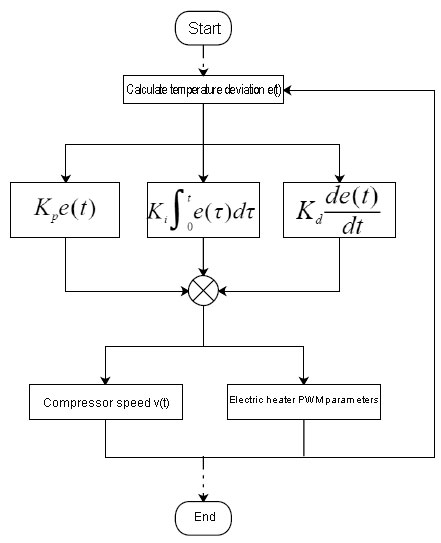
5. Validation expérimentale
Configuration des tests:
Un laser UV de 10 W et une boucle de refroidissement par eau de 1 L ont été utilisés. La température cible a été fixée à 25°C. Chiffre 6 montre le processus de stabilisation de la température.
Résultats:
- Temps de stabilisation: 6 minutes.
- Précision de la température: ±0,01°C.
Le système maintient efficacement la température de fonctionnement du laser, confirmant sa grande précision et sa réactivité.
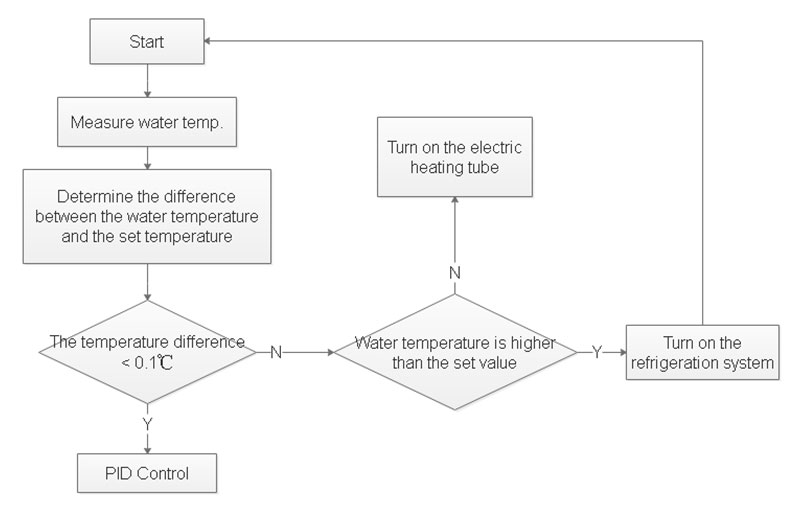
6. Avantages comparatifs
Par rapport aux méthodes de refroidissement traditionnelles:
- Taille compacte & Poids léger: Idéal pour les applications dans des espaces restreints.
- Efficacité énergétique: Capacité de refroidissement supérieure et consommation d’énergie réduite.
- Rentabilité: Compétitif avec les systèmes TEC tout en offrant une plus grande précision.
- Versatilité: Compatibilité avec diverses normes d'alimentation.
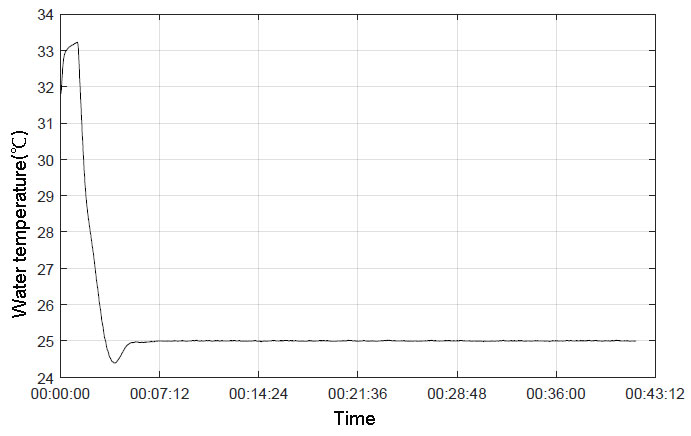
7. Les refroidisseurs avec ce compresseur miniature ont les avantages ci-dessous
Cette étude présente un système de contrôle de température de haute précision pour les lasers UV entièrement solides, tirant parti d'un compresseur CC miniature et d'une compensation électrothermique. La conception compacte du système, stabilisation rapide, et une précision exceptionnelle (±0,01°C) en font une solution pratique pour les applications industrielles telles que le marquage et la découpe de précision. Son évolutivité et son efficacité sont très prometteuses pour faire progresser les technologies de refroidissement laser et promouvoir leur adoption généralisée..
Bibliographie
[1] Maiman T.H.. Rayonnement optique stimulé dans le rubis [J.]. Nature, 1960, 187.
[2] Fu, Zhongshan. Application et développement du laser [J.]. Technologie électronique et génie logiciel, 2017(5).
[3] Shen Zhaoguo. Recherche sur les lasers verts 532 nm et ultraviolets 355 nm pompés par LD [D]. Université du Nord-Ouest, 2009.
[4] Ok M, Liu L.Y.. Tous les Nd à onde continue à semi-conducteurs ont quadruplé la fréquence: Laser YAG [J.]. Journal IEEE sur des sujets sélectionnés en électronique quantique, 1995, 1(3):P.859-866.
[5] N. Hodgson, D. Dudley, L. Gruber, et autres. Diode pompée à l'extrémité, TEM/sous 00/ sd: YVO/sous 4/ laser avec une puissance de sortie supérieure à 12 Quoi 355 nm[C]// Conférence sur les Lasers & Électro-optique. IEEE, 2001.
[6] David R.. Dudley, Olivier Mehl, Gary Y.. Wang, et autres. Nd pompé par diode à commutation Q: Laser à tige YAG avec une puissance de sortie de 420 W à 532 nm et 160 W à 355 nm [J.]. Actes de Spie, la Société internationale d'ingénierie optique, 2009, 7193(1):28.
[7] Chen G.F., Wang X.H., Tu vas aller. Recherche sur tous les lasers ultraviolets à semi-conducteurs [J.]. Journal de photonique, 1999(09):785-788.
[8] Shaolin Wang, Kaifa Cao, Zong Ming Tao, et autres. Recherche sur le système spectroscopique de vapeur d'eau ultraviolette Raman Lidar [J.]. Journal d'Optoélectronique-Laser, 2010, 21 (08):1171-1175.
[9] Xue Chun Tan. Dispositif de simulation de radar laser et recherche expérimentale [D]. Université des sciences et technologies de Changchun, 2012
[10] McGill Matthieu, Hlavka Dennis, Hart William, et autres. Lidar physique des nuages: description de l'instrument et résultats de mesure initiaux. 2002, 41(18):3725-34.
[11] Yang Wang, Xu Bao Wang, Zhan Ling Dong, et autres. Expression de la β-caténine et de la protéine γ du récepteur activé par les proliférateurs de peroxysomes dans les tissus hépatiques irradiés par un laser ultraviolet[J.]. Journal chinois de recherche en ingénierie tissulaire, 2011,15(33):6191-6195.
[12] Jiye Li, Keni Qiu. L'application de la communication ultraviolette dans le système de communication militaire. Optique & Technologie optoélectronique[J.],2005( 04):19-21.
[13] Non S. L., Guan Y.. C. Lasers ultraviolets et son application en micro-usinage [J.]. Ingénierie optoélectronique, 2017, 44(12):1169-1179+1251.
[14] Wang D.. Exploration de la génération et des applications de laser femtoseconde UV profond et UV sous vide [D]. Université normale de Chine orientale, 2016.
[15] TG Kim, M Ogura. Température caractéristique élevée (T o = 322 K proche de la température ambiante) de lasers à diodes à fil quantique Al GaAs-GaAs à rainures en V[J.]. Électronique à semi-conducteurs, 2000, 44(1).
[16] Li L., Ling EST, Bateau, Tian F., Bai JT. Recherche sur le champ de température du cristal non linéaire KTP dans un système laser refroidi à l'eau[J.]. Laser & Infrarouge, 2005(01):51-54.
[17] Zeng H-L, Jiang P-F, Xie F-Zeng. Recherche sur le contrôle de la température des lasers à semi-conducteurs [J.]. Laser et Infrarouge, 2004(05):339-340+346.
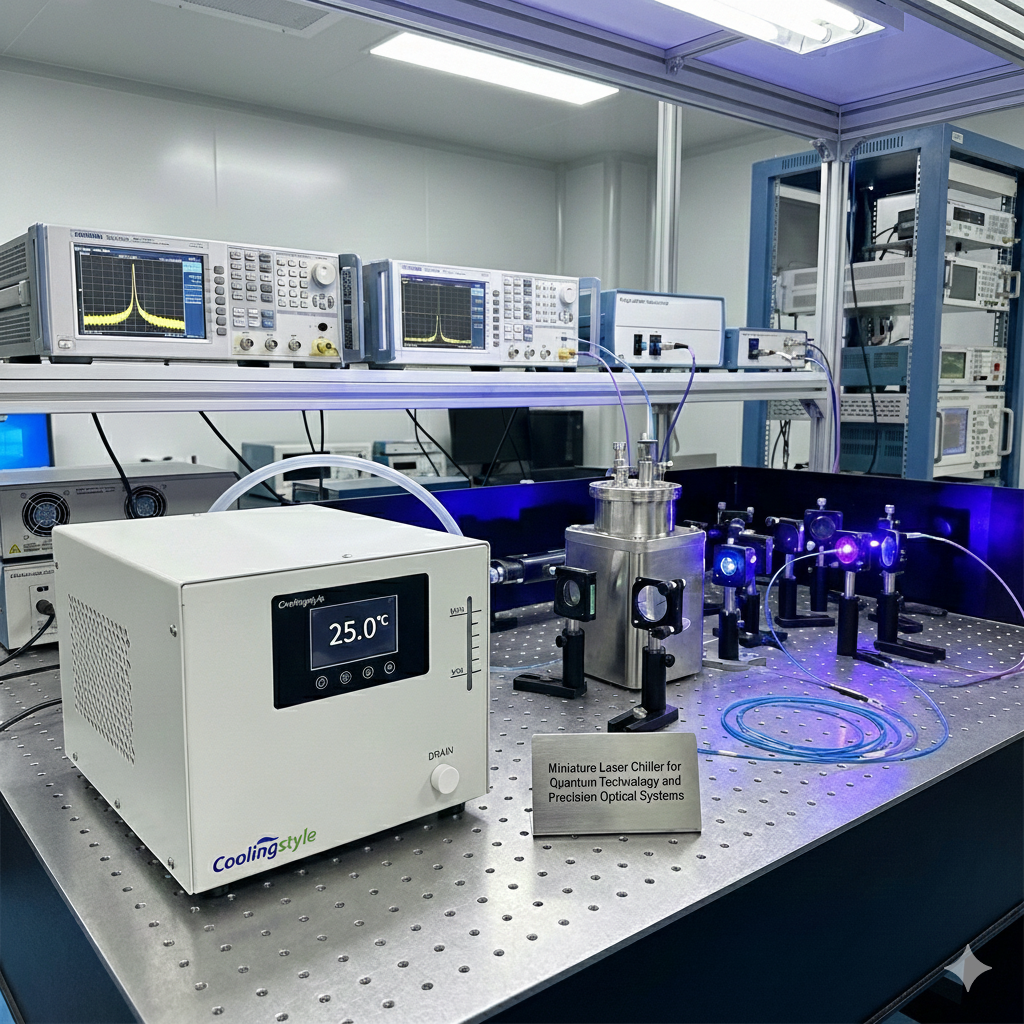
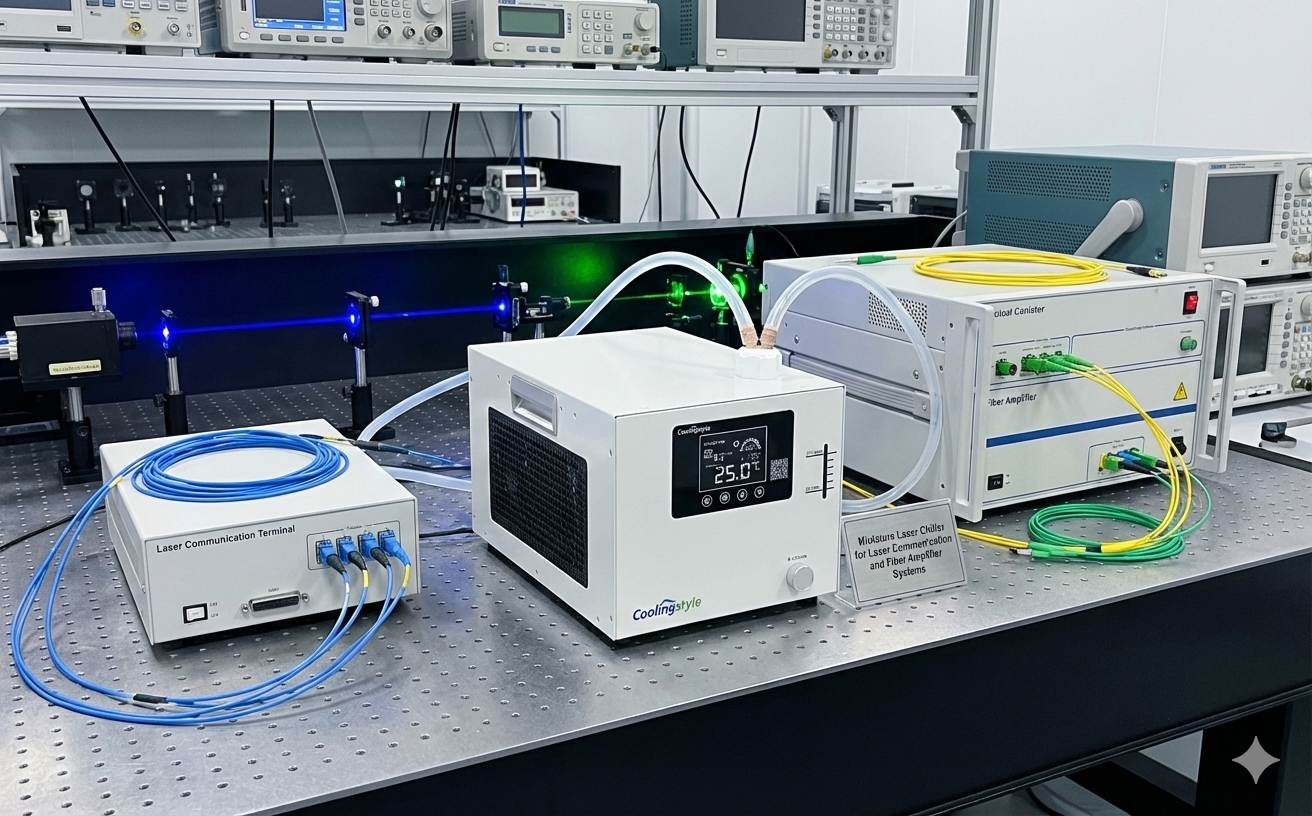
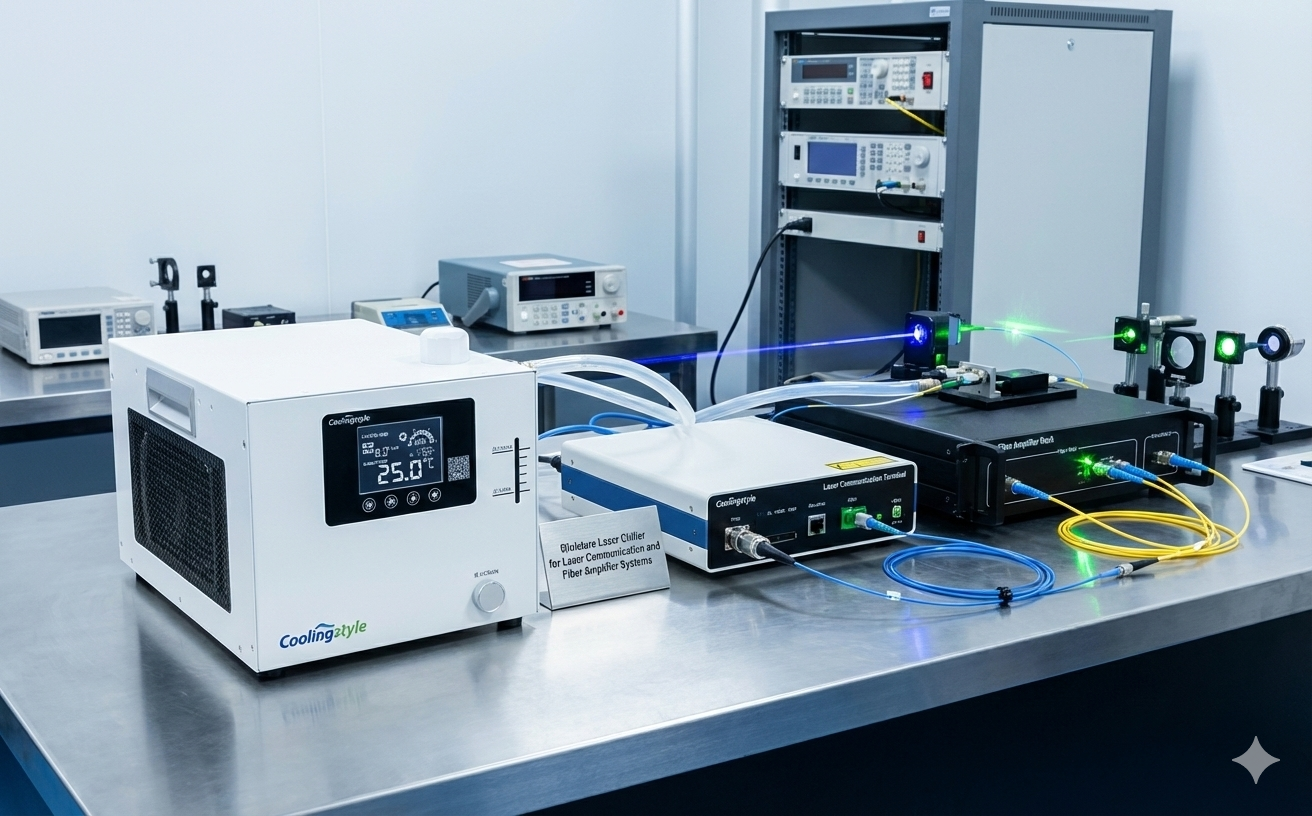

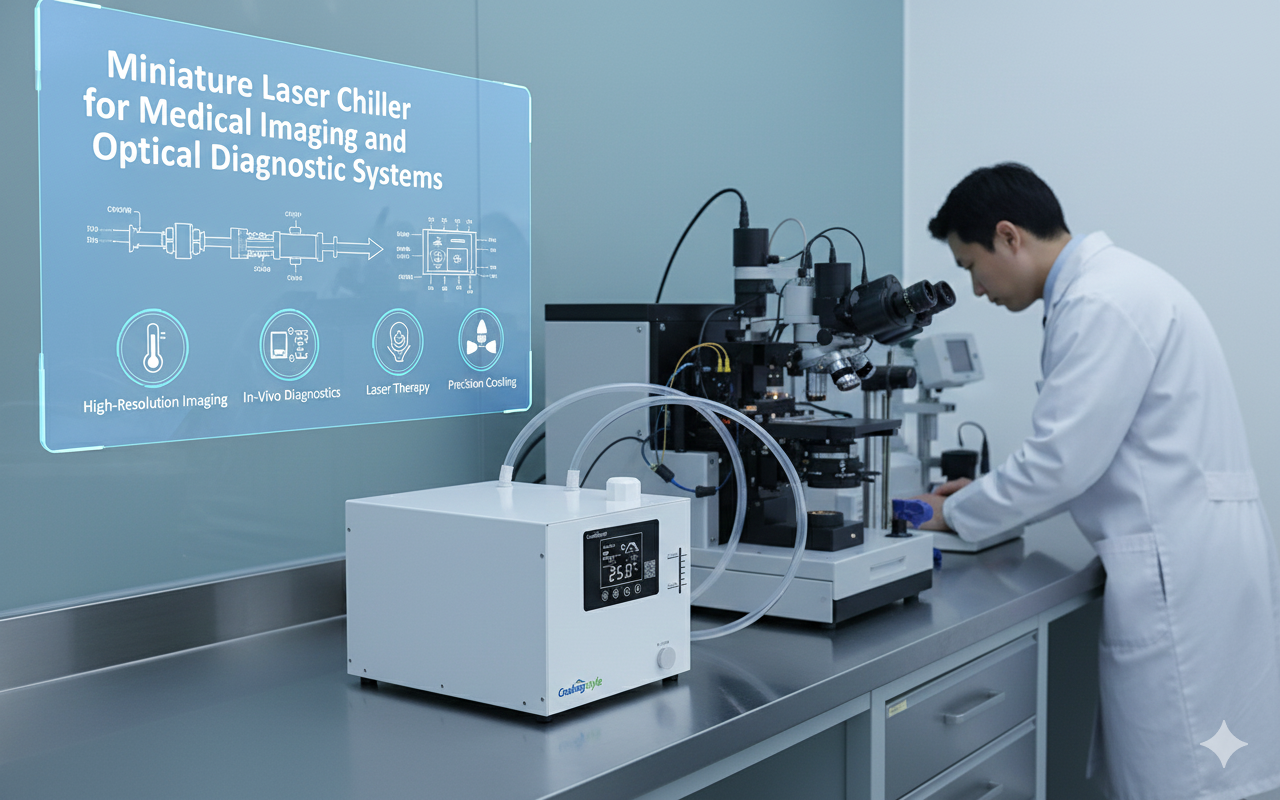
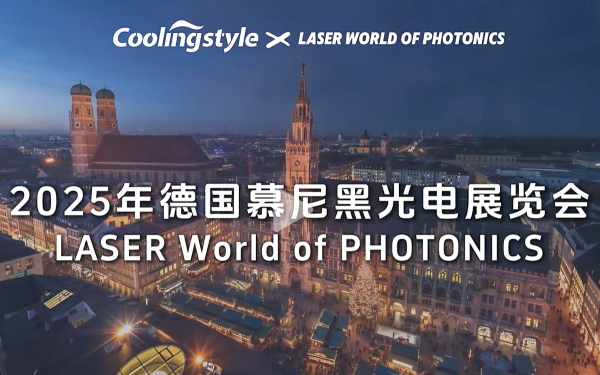
1 réflexion sur "Contrôle précis de la température pour les lasers UV à semi-conducteurs utilisant des systèmes de compresseur DC miniatures: Une nouvelle approche”
C'est la première fois que je visite ici et je suis vraiment heureux de tout lire en un seul endroit..